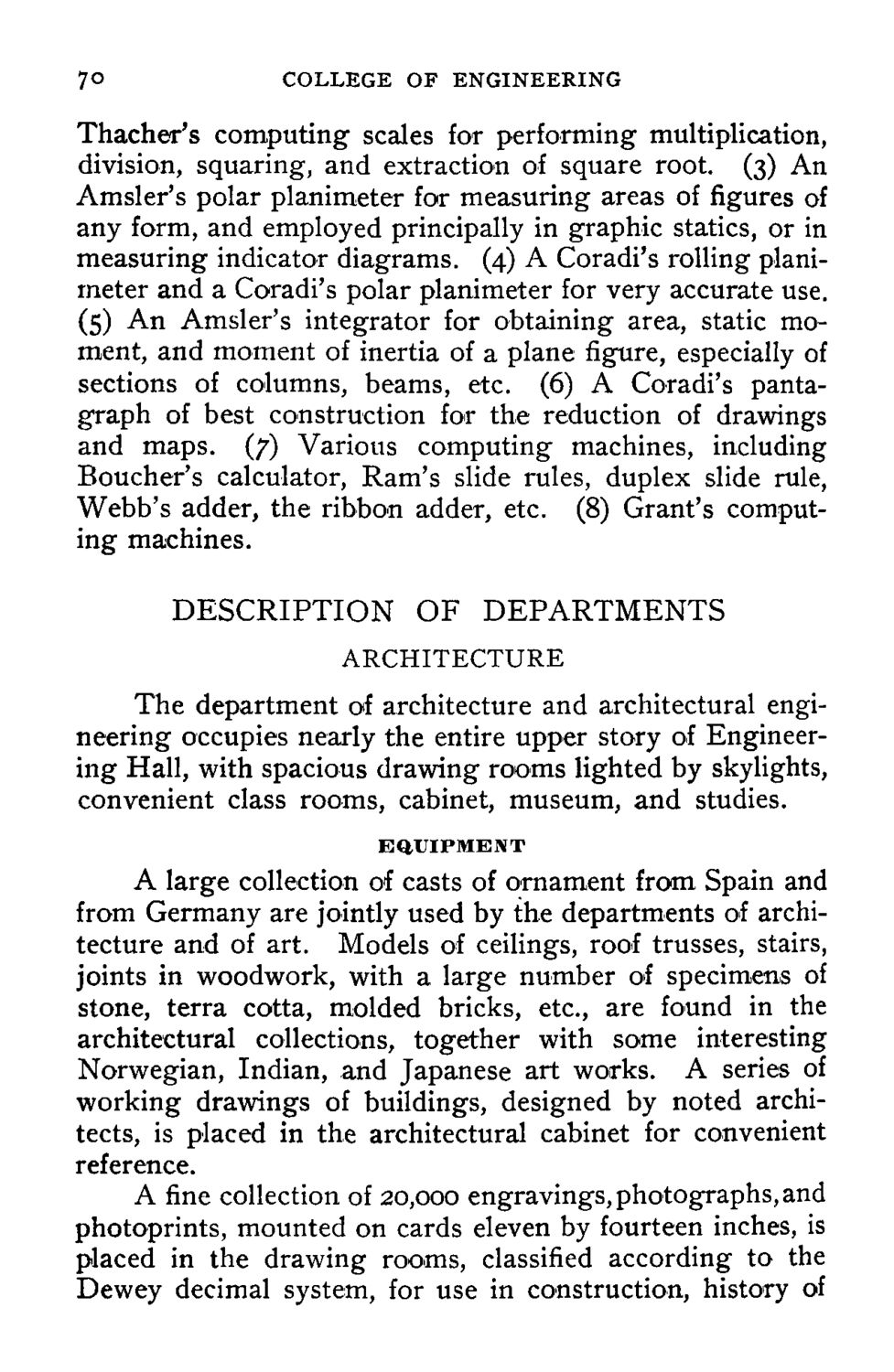| |
| |
Caption: Course Catalog - 1897-1898
This is a reduced-resolution page image for fast online browsing.

EXTRACTED TEXT FROM PAGE:
7° COLLEGE OF ENGINEERING Thacher's computing scales for performing multiplication, division, squaring, and extraction of square root. (3) An Amsler's polar planimeter for measuring areas of figures of any form, and employed principally in graphic statics, or in measuring indicator diagrams. (4) A Coradi's rolling planimeter and a Coradi's polar planimeter for very accurate use. (5) An Amsler's integrator for obtaining area, static moment, and moment of inertia of a plane figure, especially of sections of columns, beams, etc. (6) A Coradi's pantagraph of best construction for the reduction of drawings and maps, (f) Various computing machines, including Boucher's calculator, Ram's slide rules, duplex slide rule, Webb's adder, the ribbon adder, etc. (8) Grant's computing machines. DESCRIPTION OF DEPARTMENTS ARCHITECTURE The department of architecture and architectural engineering occupies nearly the entire upper story of Engineering Hall, with spacious drawing rooms lighted by skylights, convenient class rooms, cabinet, museum, and studies. EQUIPMENT A large collection of casts of ornament from Spain and from Germany are jointly used by the departments of architecture and of art. Models of ceilings, roof trusses, stairs, joints in woodwork, with a large number of specimens of stone, terra cotta, molded bricks, etc., are found in the architectural collections, together with some interesting Norwegian, Indian, and Japanese art works. A series of working drawings of buildings, designed by noted architects, is placed in the architectural cabinet for convenient reference. A fine collection of 20,000 engravings, photographs, and photoprints, mounted on cards eleven by fourteen inches, is placed in the drawing rooms, classified according to the Dewey decimal system, for use in construction, history of
| |